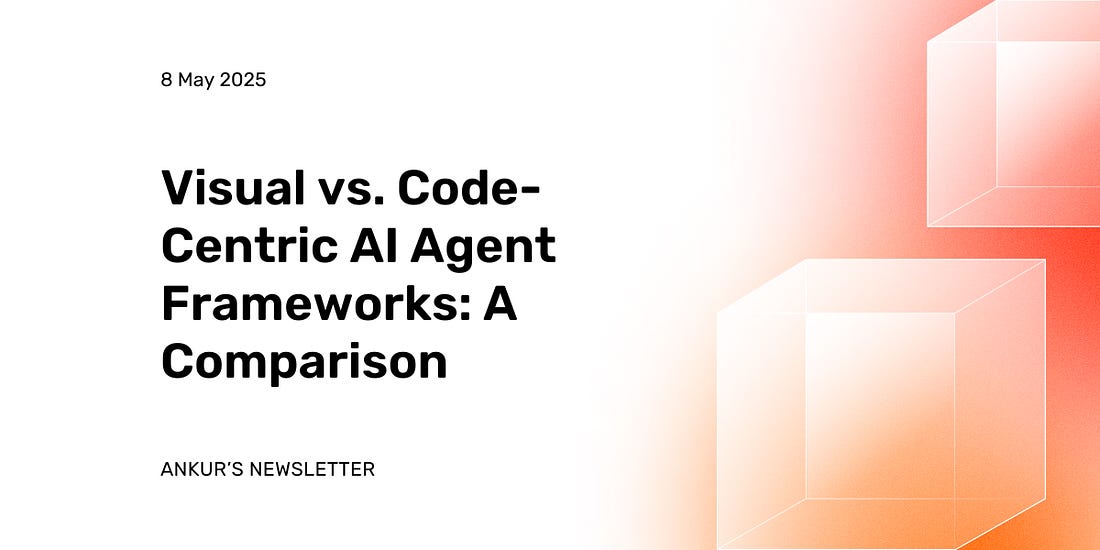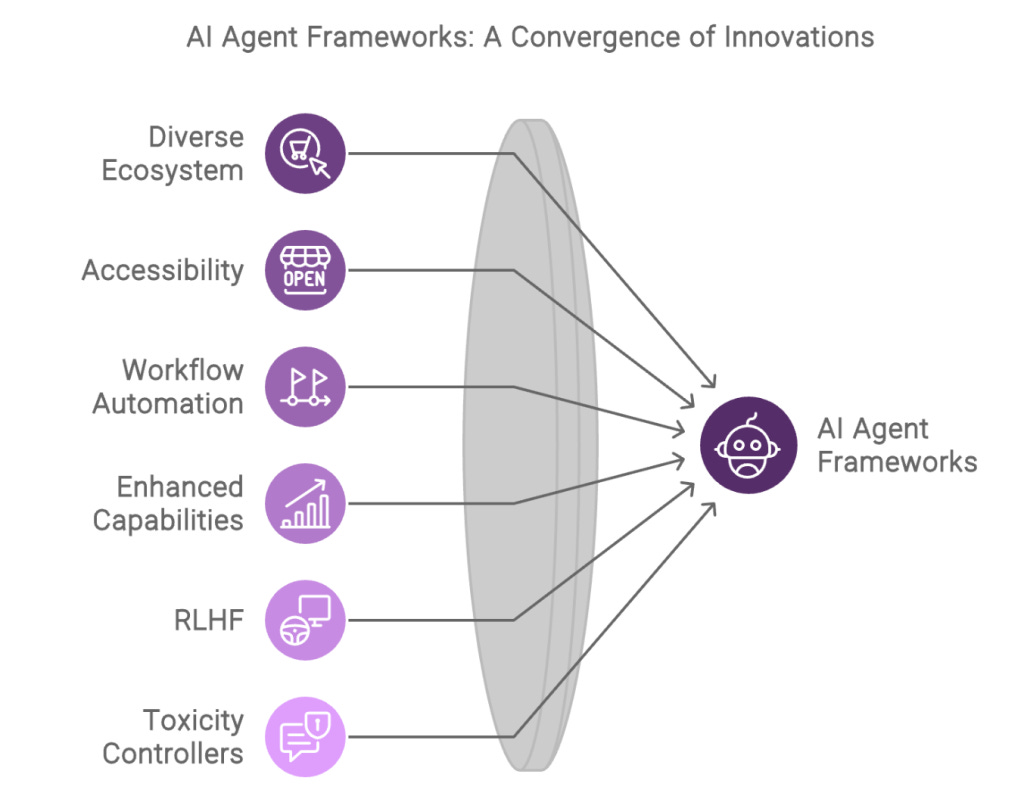|
 |
Visual vs. Code-Centric AI Agent Frameworks: A Comparison
Compare visual vs. code-centric AI agent frameworks to find the best fit for your workflow-exploring use cases, technical specs, pros, and cons.
Key Takeaways
Visual agent frameworks like Flowise, Botpress, and n8n enable rapid, no-code workflow design, making them ideal for prototyping and business users.
Code-centric frameworks such as AutoGen, LangGraph, and SmolAgents provide granular control, scalability, and advanced customization for complex, enterprise-grade applications.
Visual tools excel in speed, accessibility, and integration but are limited in deep customization and may pose vendor lock-in risks.
Code-centric solutions demand greater technical expertise and operational investment but unlock persistent memory, custom toolchains, and sophisticated agent orchestration.
The optimal framework choice depends on team expertise, project complexity, and the need for either rapid prototyping or advanced, scalable agentic systems.
In 2023, I started Multimodal, a Generative AI company that helps organizations automate complex, knowledge-based workflows using AI Agents. Check it out here.
The AI agent framework landscape in 2025 is split between two dominant paradigms: visual frameworks and code-centric frameworks. Each offers a distinct approach to designing, deploying, and scaling agentic workflows, and the choice between them often reflects both the technical depth of the team and the complexity of the use case.
Visual Frameworks: Drag-and-Drop Simplicity
Visual agent frameworks like Flowise, Botpress, and n8n are designed for accessibility and speed. With intuitive drag-and-drop interfaces, these platforms let users visually assemble agent workflows-no coding required.
For example, Flowise offers a node-based builder for LLM-powered apps, while Botpress provides a visual flow editor tailored for customer-facing chatbots. n8n excels at integrating agent workflows with business systems through its extensible, visual approach.
The visual paradigm is ideal for cross-functional teams or business users who need to prototype and deploy solutions quickly, without deep programming knowledge.
Code-Centric Frameworks: Developer Control and Customization
On the other hand, code-centric frameworks such as AutoGen, LangGraph, and SmolAgents cater to developers seeking full control and advanced customization. These platforms use languages like Python or TypeScript to define agent logic, orchestrate multi-agent collaboration, and build complex workflows.
AutoGen is tailored for orchestrating teams of AI agents, while LangGraph enables graph-based, stateful workflows with persistent memory. SmolAgents focuses on lightweight automation with direct code execution. Code-centric frameworks are best suited for teams with programming expertise, complex requirements, or enterprise-scale deployments where flexibility and precision are paramount.
Visual Frameworks: Use Cases & Technical Specs
Key Players and Their Strengths
Visual agent frameworks have surged in popularity by lowering the barrier to entry for building sophisticated AI workflows. The leaders in this space-Flowise, Botpress, n8n, and Langflow-offer drag-and-drop interfaces and prebuilt templates, making agent development accessible to users with minimal coding experience.
- Flowise is renowned for its visual builder tailored to LLM orchestration, integrating seamlessly with LangChain and LlamaIndex for retrieval-augmented generation (RAG) and multi-agent setups.
- Botpress stands out for its template-driven chatbot creation and multi-channel deployment.
- n8n’s extensible architecture supports both trad



